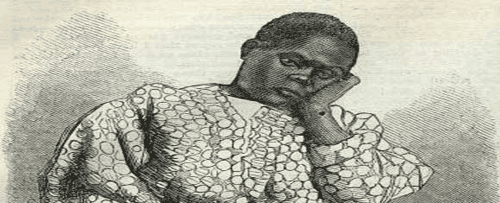Review Team for Psychological Approaches

Jessica Wood

Ashley Fromm
Sample Essay:
"Two Decades of Terrible Twos: A Psychoanalytical Analysis of Beloved"
by Aubrie Cox

Abubrie Cox
"Psychological Criticism of Toni Morrison’s Beloved" by Shelby Larrick

Shelby Larrick
|
Psychological Approaches
The foundation of psychological criticism
is Dr. Sigmund Freud’s premise that the mind has both a conscious
and unconscious realm. Psychology most often explores the unconscious
mind, which uses isolation, intellectualization, repression, projection,
displacement, denial, and/or reaction formations to disguise the thoughts
and emotions that the conscious mind refuses to accept. Isolation
occurs when one acknowledges an incident but does not confront its
significance. When a person attempts to rationalize a situation
rather than emotionally experience it, he or she is intellectualizing. Repression
is like selective hearing for the mind; to repress a thought or occurrence
is to deny its existence. An individual is engaging in projection
when he or she sees a trait in others not because it is necessarily
present, but because it is present in the individual. Displacement
involves targeting someone less dangerous or powerful than the person
one really wishes to oppose. Denial is the blatant refusal to
accept that a situation or thought is undesirable, and reaction formation
occurs when one denies the inconvenient and insists that all is well. Knowledge
of these and other psychological terms aids the critic in locating
the hidden desires of the author, his or her characters, and his or
her readers.
Many critics and psychologists have used
Freud’s work as a jumping-off point, further developing his assumptions
in order to construct their own theories. Otto Rank used the
idea of the Oedipal complex to explain similarities among literary
heroes. Alfred Adler introduced the idea of an “inferiority
complex,” and Carl Jung believed in the existence of a “collective
unconscious,” the universal repression of common desires that
threaten the stability of our society. Robert Rogers theorizes
that within each person there are “multiple selves.” Rogers
holds that while one self may be dominant, other selves might surface
in one’s writing. Some psychoanalytic critics, such as
Norman Holland, focus on the reader’s response to the text rather
than the author. Holland states that the reader’s interpretations
are more revealing than the author’s motives: “While not
denying the idea that the unconscious plays a role in creativity, psychoanalytic
critics such as Holland began to focus more on the ways in which authors
create works that appeal to our repressed wishes and fantasies” (Schwarz
91). His theory connects psychological criticism with reader
response criticism. Jacques Lacan believes in a concrete connection
between the world of dreams and the world of literature; neither is
real, he says, but both help to reveal the thoughts and desires of
the unconscious: “[Lacan] treats the unconscious as a
language and, consequently, views the dream not as Freud did (that
is, as a form and symptom of repression) but rather as a form of discourse” (Schwarz
92). Lacan connects the development of an Oedipal complex with
the development of language skills. He also believes that a society’s
language defines its gender roles, a theory which is often acceptable
to feminist readers, because it explains how women may feel inferior
to men without claiming that they all experience “penis envy.”
Psychological criticism assumes that
every literary work contains two basic layers of meaning. The
most obvious part of any work is the surface layer, or the “manifest
content.” This exterior provides a context for the “dream
thought,” where the secrets of the author and his or her characters
are hidden. Psychological critics attempt to discover which repressed
desires and emotions are represented in the dream thought. There
are two ways to represent repressed desires and emotions: condensation
and displacement. In condensation, one thought or event is representative
of multiple thoughts or events, and in displacement, a desire is represented
by some other emotion or event that is only loosely connected to the
original. Metaphors are one form of displacement.
Readers of Toni Morrison’s acclaimed
novel Beloved may use psychoanalysis to better understand
the thoughts and actions of her characters, many of which could be
considered deeply psychologically disturbed. If they choose to
follow in the tradition of Holland, they may examine their own psychological
responses to the novel. They may also theorize on Morrison’s
psychological state during the writing process: was she repressing
some wish or fear in writing Beloved? Regardless of
the reader’s strategy, examining Beloved through a psychological
lens will undoubtedly shed some amount of light on the complicated
relationships and philosophical nature of the novel.
Works
Cited
Schwarz, Daniel R. “Psychoanalytic Criticism and ‘The
Dead.’” in The Dead. Boston: Bedford/St. Martin’s, 1994. 85-102.
|
